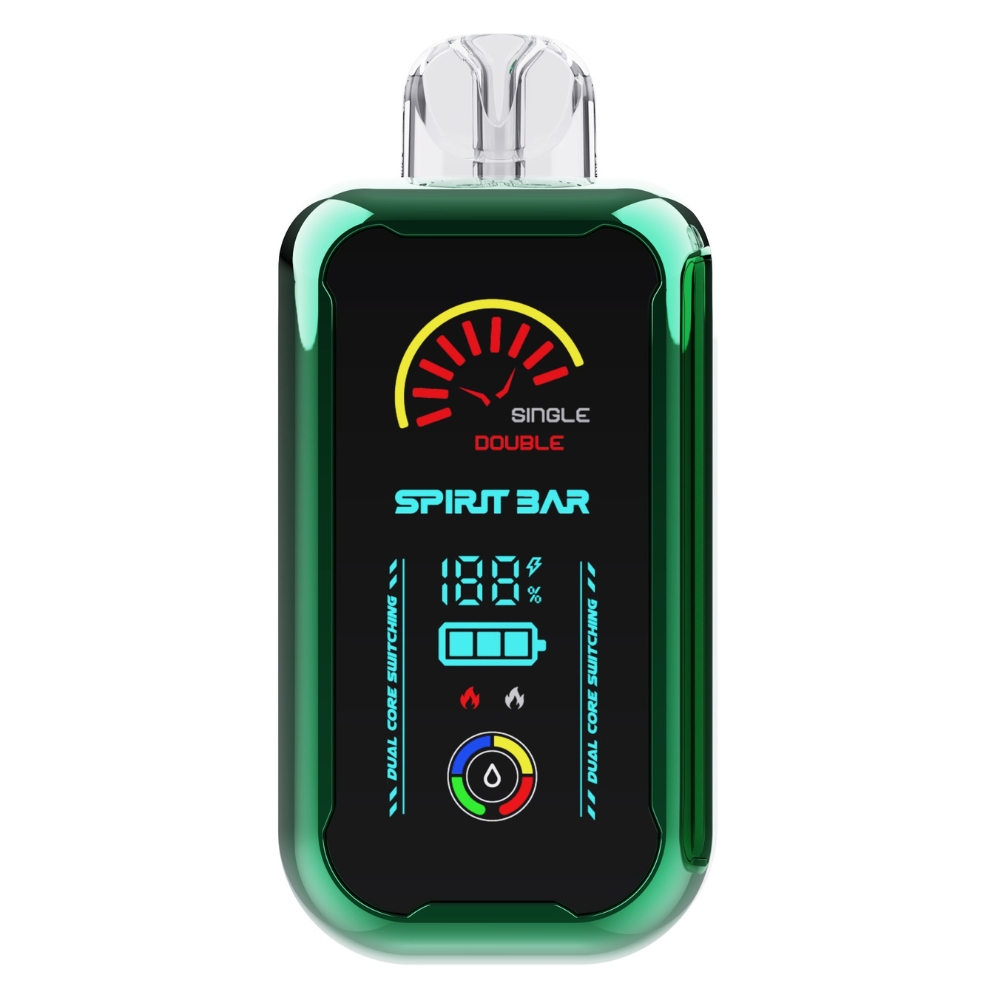At What Age Do Kids Start Vaping? A Quick Guide for Parents
Are you concerned about your child’s vaping habits? Vaping has become increasingly popular among young people in recent years, and it’s important to understand the risks associated with it. According to the Centers for Disease Control and Prevention (CDC), e-cigarettes can contain harmful substances besides nicotine, which can negatively impact adolescent brain development that continues until about age 25.
So, at what age do kids start vaping? Unfortunately, there is no one-size-fits-all answer to this question. Vaping can start as early as middle school, with some kids as young as 11 or 12 experimenting with e-cigarettes. However, it’s more common for kids to start vaping in high school. In fact, a survey conducted by the CDC found that in 2020, more than 1 in 4 high school students reported using e-cigarettes in the past 30 days.
As a parent or caregiver, it’s important to be aware of the signs of vaping and to have open and honest conversations with your child about the risks associated with it. By staying informed and engaged, you can help prevent your child from developing a potentially harmful habit.
Understanding Vaping
https://www.youtube.com/watch?v=fLIGxXrCQGg&embed=true
Vaping is the act of inhaling and exhaling the aerosol, often referred to as vapor, produced by an e-cigarette or similar device. E-cigarettes are battery-powered smoking devices that simulate the experience of smoking tobacco. They work by heating a liquid (called “e-juice” or “vape juice”) that usually contains nicotine, flavorings, and other chemicals. The heated liquid turns into a vapor, which the user inhales into their lungs.
Vaping has become increasingly popular among youth in recent years. According to the Centers for Disease Control and Prevention (CDC) source, e-cigarette use increased by 78% among high school students from 2017 to 2018. This increase is concerning because e-cigarettes can harm adolescent brain development, which continues into the early to mid-20s. Nicotine is highly addictive, and e-cigarettes can contain other harmful substances besides nicotine.
It’s important to understand that e-cigarettes are not safe for kids, teens, or young adults. According to the American Heart Association source, young people who use e-cigarettes may be more likely to smoke cigarettes in the future. Additionally, studies have found that youth who vape are more likely to start smoking cigarettes within 18 months compared to youth who do not use e-cigarettes source.
It’s important to talk to your kids about the dangers of vaping and e-cigarettes. Maintaining an open dialogue and being honest with your children can help prevent them from starting to vape or smoke. The Youth Clinic of Northern Colorado provides helpful tips for talking to kids of different ages about vaping source:
- For children ages 10 to 12, focus on the facts and explain what vaping is and how it can harm their health.
- For teens ages 13 to 15, emphasize the negative effects of vaping on their physical appearance, athletic performance, and social life.
- For older teens ages 16 to 18, discuss the potential legal and financial consequences of vaping, as well as the risks of addiction and long-term health problems.
Remember, it’s never too early to start talking to your kids about the dangers of vaping. By maintaining an open and honest dialogue, you can help protect your children from the harmful effects of e-cigarettes.
Age Trends in Vaping
https://www.youtube.com/watch?v=i4G3GP3vPW0&embed=true
Vaping has become increasingly popular among young people in recent years. According to CDC, e-cigarettes can contain harmful substances besides nicotine, and young people who use e-cigarettes may be more likely to smoke cigarettes in the future. Here are some age trends in vaping that you should be aware of.
Adolescent Vaping Statistics
Adolescents are at a higher risk of developing a nicotine addiction due to their developing brains. As per a Psychology Today article, in the past 12 months, 16.6% of 8th graders, 30.7% of 10th graders, and 34.5% of 12th graders vaped nicotine. The article also revealed that the use of e-cigarettes among teenagers has increased significantly over the past few years.
Early Exposure to Vaping
According to a Brookings article, rates of youth vaping increase starting at age 13. In 2018, 22% of 16-year-olds and 24% of 17-year-olds reported smoking an e-cigarette. Early exposure to vaping can harm adolescent brain development, which continues into the early to mid-20s. Therefore, it is crucial to educate children and teenagers about the risks of vaping and discourage them from starting to use e-cigarettes.
In conclusion, it is essential to be aware of the age trends in vaping to protect children and teenagers from the harmful effects of e-cigarettes. Parents and educators should educate young people about the risks of vaping and discourage them from starting to use e-cigarettes.
Factors Influencing Vaping in Kids
When it comes to vaping among kids, there are several factors that can influence their decision to start. Understanding these factors can help parents, educators, and healthcare professionals take steps to prevent kids from vaping.
Peer Pressure
Peer pressure is one of the most common reasons why kids start vaping. When their friends vape, kids may feel pressure to try it themselves. They may also feel like they need to vape in order to fit in with their peers.
Media Influence
Media influence can also play a role in kids’ decision to start vaping. Advertising and social media can make vaping seem cool and trendy, which can make kids more likely to try it. Kids may also see celebrities or influencers vaping, which can make it seem like a harmless activity.
Family Influence
Family influence can also impact kids’ likelihood of vaping. Kids who have family members who smoke or vape may be more likely to try it themselves. Additionally, parents who vape may unintentionally normalize the behavior in front of their kids.
It’s important to remember that vaping can have serious health consequences, especially for kids. Nicotine is highly addictive and can harm adolescent brain development, which continues into the early to mid-20s [1]. E-cigarettes can also contain other harmful substances besides nicotine [1]. By understanding the factors that influence kids’ decisions to vape, we can take steps to prevent it and protect their health.
[1] Quick Facts on the Risks of E-cigarettes for Kids, Teens, and Young Adults
Health Implications of Vaping at a Young Age
Vaping has become increasingly popular among young people in recent years. According to CDC, e-cigarette use among high school students increased from 1.5% in 2011 to 27.5% in 2019. This is a concerning trend as vaping can have serious health implications, especially when started at a young age.
Physical Health Risks
Vaping can have adverse effects on physical health, particularly on the respiratory system. The American Heart Association states that vaping can cause inflammation in the lungs, leading to coughing, wheezing, and shortness of breath. Vaping can also lead to lung damage and respiratory illness, such as bronchitis and pneumonia. Moreover, e-cigarettes can contain harmful chemicals, such as nicotine, formaldehyde, and acrolein, which can increase the risk of cancer and other health problems.
Mental Health Risks
Vaping can also have negative effects on mental health, particularly on the developing brain. According to KidsHealth, nicotine is highly addictive and can harm adolescent brain development, which continues into the early to mid-20s. Vaping can also increase the risk of anxiety, depression, and other mental health problems. Furthermore, young people who use e-cigarettes may be more likely to smoke cigarettes in the future.
In conclusion, vaping at a young age can have serious health implications, both physical and mental. It is important to educate young people about the risks of vaping and discourage them from starting this harmful habit.
Preventing Early Age Vaping
Vaping among kids and teens is a growing concern. It is important to prevent early age vaping as it can lead to nicotine addiction and other health problems. Here are some ways parents, schools, and government regulations can help prevent vaping among kids and teens.
Role of Parents
Parents play a crucial role in preventing their kids from vaping. Here are some tips for parents:
- Talk to your kids about the dangers of vaping and nicotine addiction. Start the conversation early and keep it ongoing.
- Be a good role model. If you are a smoker or vaper, quit or limit your use around your kids.
- Monitor your kids’ behavior. Look for signs of vaping such as unusual odors, increased thirst, and mood swings.
- Set clear rules and consequences. Let your kids know that vaping is not allowed and there will be consequences if they break the rules.
Role of Schools
Schools can also play an important role in preventing vaping among students. Here are some ways schools can help:
- Educate students about the dangers of vaping and nicotine addiction. Use age-appropriate materials and make it an ongoing conversation.
- Enforce a strict no-vaping policy on school grounds. Make sure students understand the consequences of violating the policy.
- Provide resources for students who want to quit vaping. This can include counseling, support groups, and nicotine replacement therapy.
Government Regulations
Government regulations can help prevent vaping among kids and teens by restricting access to vaping products and enforcing age limits. Here are some examples of government regulations:
- Raise the legal age for purchasing vaping products to 21.
- Ban flavored vaping products that appeal to kids and teens.
- Restrict online sales of vaping products to prevent minors from buying them.
Preventing early age vaping requires a collaborative effort from parents, schools, and government regulations. By working together, we can help protect our kids from the dangers of vaping.


